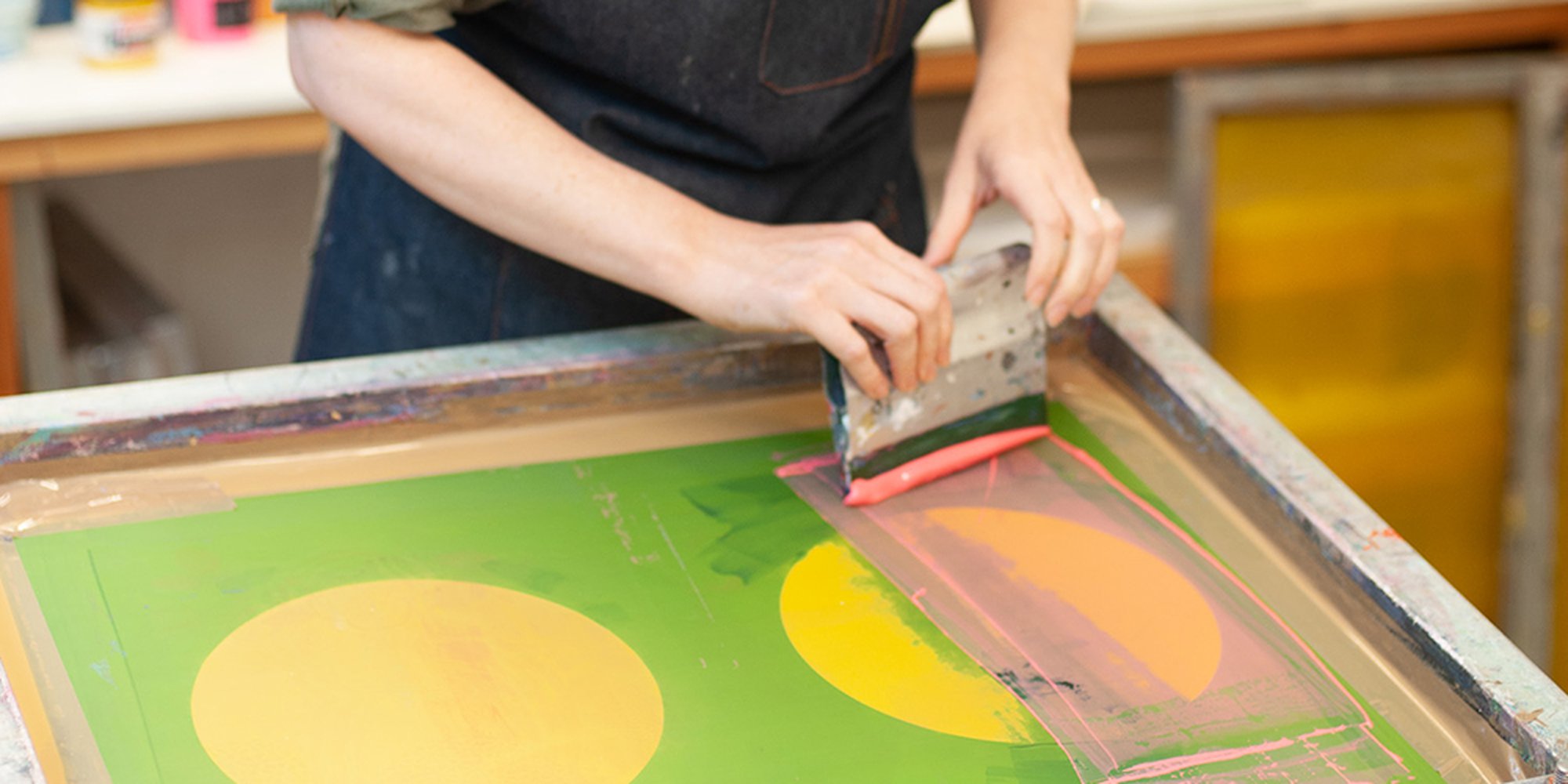ChatGPT said: How 10:9 Design Screen Printing can elevate your event presence
Wiki Article
The Necessary Overview to Recognizing Screen Printing and Its Versatile Utilizes
Screen printing has an abundant history that dates back to ancient times, evolving into a sophisticated technique used throughout numerous sectors today. This guide checks out the details of the screen printing process, detailing its applications in fashion, advertising and marketing, and home design - 10:9 Design Embroidery. Understanding these principles can open up creative capacity for both business and imaginative projects. The following areas will reveal essential pointers and methods to enhance one's screen printing endeavorsThe Background of Screen Printing
Screen printing has origins that map back centuries, its development reflects the technical and artistic improvements of different cultures. Coming from old China, the method was at first used for embellishing fabrics and later spread to Japan, where it came to be important to Ukiyo-e woodblock printing. The method changed to Europe in the 18th century, where it acquired popularity amongst craftsmens and business printers. The invention of photo solution in the 20th century transformed screen printing, permitting even more detailed styles and better performance. Musicians like Andy Warhol better pushed its appeal, using the tool to produce iconic works that combined commercialism and art. By the late 20th century, screen printing had developed itself as a versatile method, used in fashion, advertising, and art. Today, it proceeds to develop, incorporating electronic modern technology and increasing its applications across numerous markets.The Screen Printing Refine Explained
Screen printing transforms creative visions into tangible layouts through a collection of specific steps. Initially, a photo is developed and then moved onto a screen, generally made from fine mesh fabric stretched over a frame. A light-sensitive solution is put on the screen, which is revealed to light, hardening in areas not covered by the picture. After washing out the unhardened emulsion, a stencil is formed.Next off, the screen is positioned over the substrate, whether it be textile, paper, or another material. Ink is then pushed via the open areas of the stencil utilizing a squeegee, depositing the style onto the substrate below. This procedure can be duplicated for numerous shades, calling for different screens for every color. The printed thing is healed utilizing heat to guarantee the ink sticks appropriately, resulting in a long lasting, dynamic design all set for use.
Sorts Of Screen Printing Techniques

In addition, specialty methods, such as discharge screen printing, get rid of dye from the textile to create softer prints, while aluminum foil screen printing applies metallic foil to attain a glossy surface (10:9 Design near me). Each strategy offers distinct qualities, dealing with numerous creative demands and manufacturing ranges, inevitably increasing the opportunities within the screen printing domain name
Applications of Screen Printing in Different Industries

In addition, the signs and marketing industries use screen printing for creating attractive screens and banners. This method allows for vibrant colors and intricate layouts that catch focus. In electronic devices, screen printing is used for applying conductive inks to circuit boards, important for part links. The home décor industry embraces screen printing to produce distinct styles on textiles and wall art. In general, screen printing offers as an essential device throughout varied areas, boosting items with individualized and aesthetically attractive graphics.
Tips for Effective Screen Printing Projects
While taking on a screen printing task, cautious interest to detail can substantially boost the last outcome. Choosing premium materials is essential; this consists of the screen, inks, and substrates. Making use of suitable mesh matters can impact ink deposition and information resolution. Prep work is equally essential; extensive cleaning of displays and appropriate direct exposure times assure crisp prints.Next off, accurate enrollment is vital for multi-color prints. Utilizing placement tools can help accomplish accurate layering. Additionally, screening prints on scrap materials before production assists identify potential concerns without wasting resources.

Regularly Asked Inquiries
What Materials Are Ideal for Screen Printing on Textile?
Cotton and polyester blends are ideal for screen printing on fabric because of their durability and ink absorption. Additionally, specialized materials like silk or canvas can generate one-of-a-kind textures and surfaces, improving the total design high quality.Just how Do I Clean and Maintain Screen Printing Devices?
To maintain and cleanse screen printing equipment, one need to consistently clean screens with appropriate solvents, examine mops for wear, lube moving components, and shop all products in a completely dry, dust-free environment to prolong their life expectancy.What Are the Environmental Impacts of Screen Printing?
Screen printing can have significant environmental impacts, including chemical waste from solvents and inks, water use throughout cleansing processes, and power usage. Environmentally friendly products and lasting practices are vital for decreasing these negative results.Can Screen Printing Be Done at Home Efficiently?
Screen printing can be effectively done at home with the ideal products and techniques. Hobbyists can produce top quality prints, though success depends upon their skill degree, tools, and understanding of the procedure entailed.
What Are the Prices Connected With Beginning a Display Printing Company?

Starting a screen printing business involves prices for tools, materials, and workspace. First expenditures commonly vary from a few hundred to several thousand dollars, depending on the range, top quality of equipment, and preferred production capability.
Screen printing has a rich background that dates back to ancient times, evolving right into an advanced technique made use of across numerous markets today. more info Another technique, rotary screen printing, uses cylindrical screens, facilitating constant printing on material rolls, thereby enhancing efficiency for large-scale productions. Furthermore, specialty strategies, such as discharge screen printing, remove color from the textile to create softer prints, while aluminum foil screen printing uses metallic foil to attain a shiny surface. In the style sector, screen printing is commonly used to produce vibrant styles on garments, allowing brands to display their one-of-a-kind styles. Cotton and polyester blends are optimal for screen printing on material due to their durability and ink absorption.
Report this wiki page